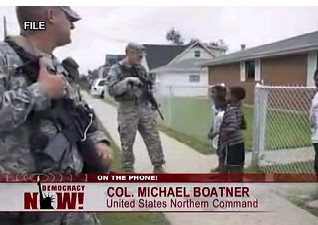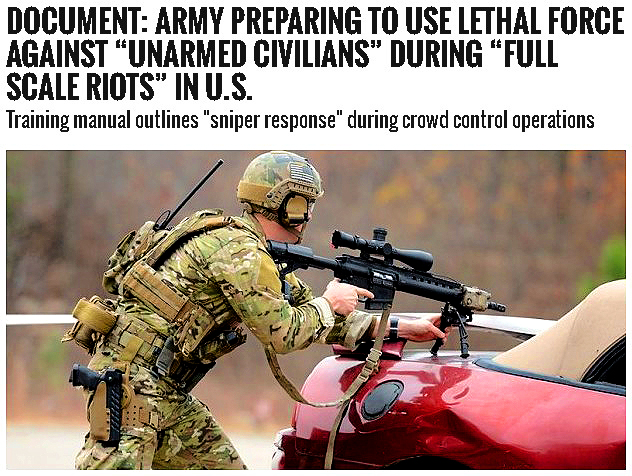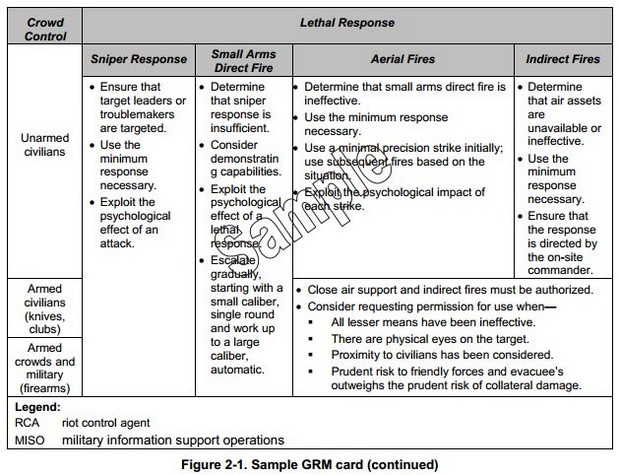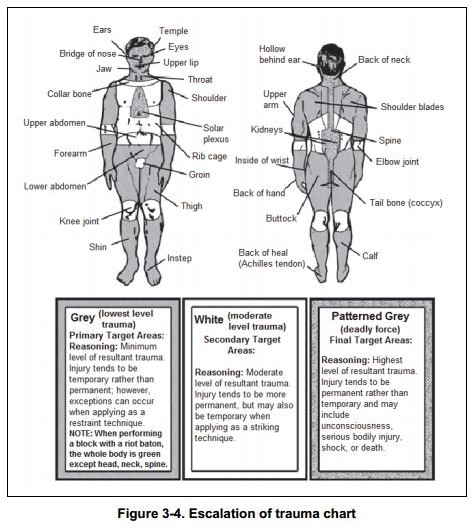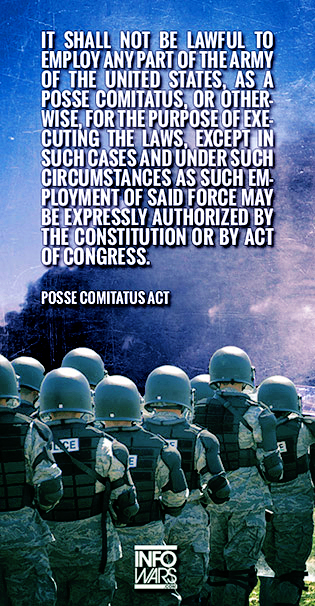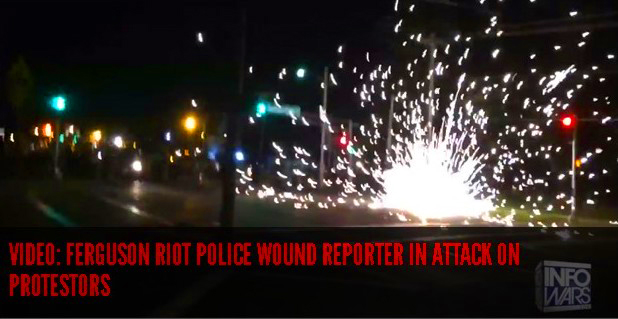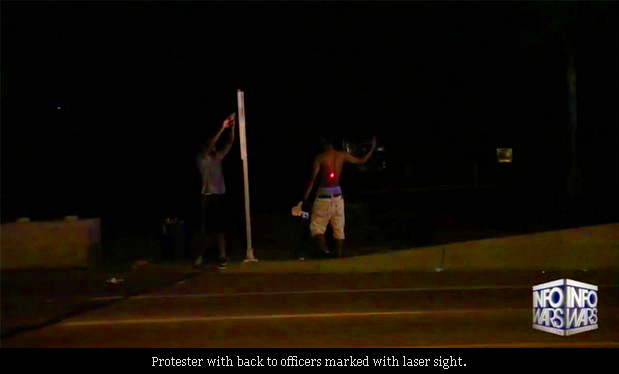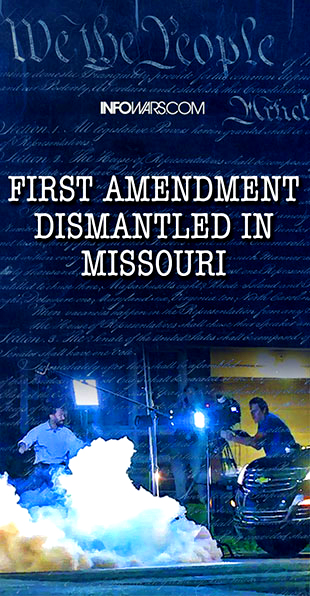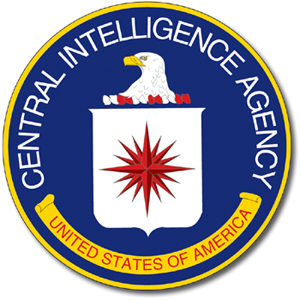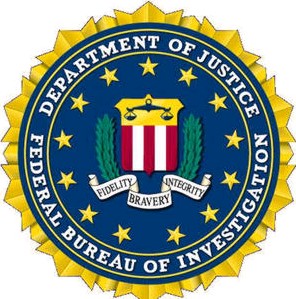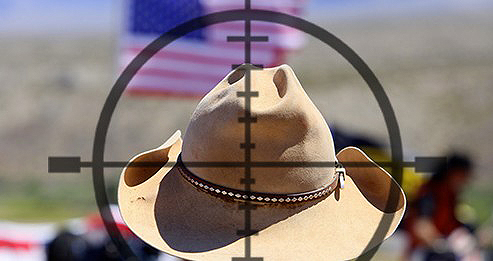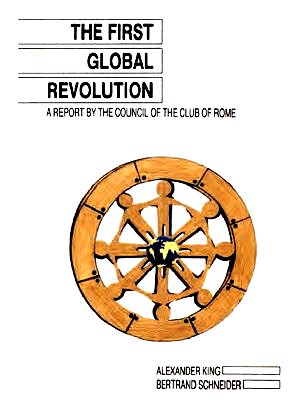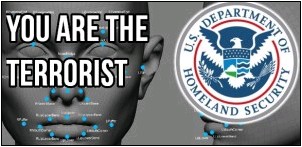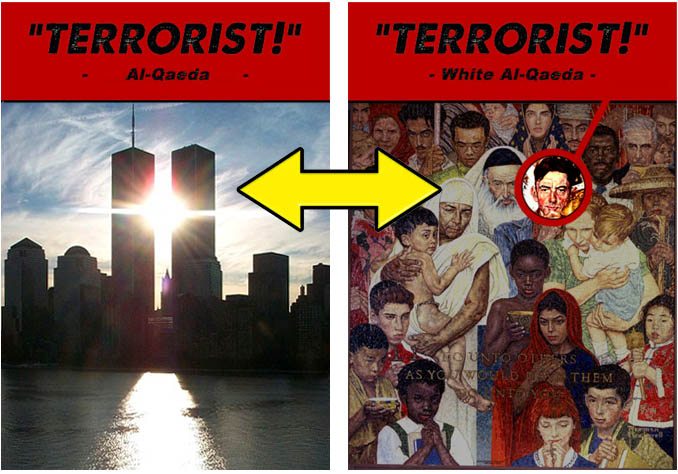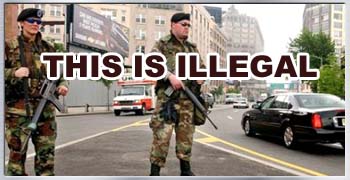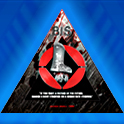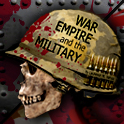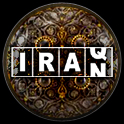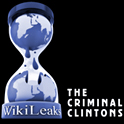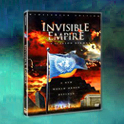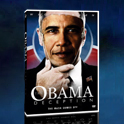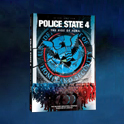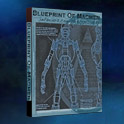welcome
|
||||||||||
Posse ComitatusLegislation
The Posse Comitatus Act is a United States federal law (18 U.S.C. § 1385) passed on June 18, 1878, after the end of Reconstruction , with the intention (in concert with the Insurrection Act of 1807) of substantially limiting the powers of the federal government to use the military for law enforcement. The Act prohibits most members of the federal uniformed services (today the Marine Corps, Army, Navy, Air Force, and State National Guard forces when such are called into federal service) from exercising nominally state law enforcement, police, or peace officer powers that maintain "law and order" on non-federal property (states and their counties and municipal divisions) within the United States.
Brazen Military Drills to Tour America in 2013
Acclimating The Public To Accept Troops On The Street! The friendlies, engaging in benign and innocuous activities, will foster trust among the people and let down their guard when things go dark later. It is classic psyops at work.
From Wikipedia, the free encyclopedia
This article is about the Posse Comitatus Act in the United States. For other uses of posse
comitatus, see Posse comitatus
(disambiguation).
The Posse Comitatus Act is a United States federal law (18 U.S.C. § 1385) passed on June 18, 1878, after the end of Reconstruction, with the intention (in concert with the Insurrection Act of 1807) of substantially limiting the powers of the federal government to use the military for law enforcement. The Act prohibits most members of the federal uniformed services (today the Marine Corps, Army, Navy, Air Force, and State National Guard forces when such are called into federal service) from exercising nominally state law enforcement, police, or peace officer powers that maintain "law and order" on non-federal property (states and their counties and municipal divisions) within the United States. The statute generally prohibits federal military personnel and units of the National Guard under federal authority from acting in a law enforcement capacity within the United States, except where expressly authorized by the Constitution or Congress. The Coast Guard is exempt from the Act.
[edit]HistoryThe Act was a response to, and subsequent prohibition of, the military occupation by U.S. Army troops of the former Confederate States during the ten years of Reconstruction (1867–1877) following the American Civil War (1861–1865). The U.S. withdrew Federal troops from Southern states as a result of a compromise in one of the most disputed national elections in American history, the 1876 U.S. presidential election. Samuel J. Tilden of New York, the Democratic candidate, defeated Republican candidate Rutherford B. Hayes of Ohio in the popular vote. Tilden garnered 184 electoral votes to Hayes' 165; 20 disputed electoral votes remained uncounted. After a bitter fight, Congress struck a deal resolving the dispute and awarding the presidency to Hayes. In return for Southern acquiescence regarding Hayes, Republicans agreed to support the withdrawal of federal troops from the former Confederate states, ending Reconstruction. Known as the Compromise of 1877, this deal of political expediency removed federal protection for Southern ex-slaves.[1 ] The U.S. Constitution places primary responsibility for the holding of elections in the hands of the individual states. The maintenance of peace, conduct of orderly elections, and prosecution of unlawful actions are all state responsibilities, pursuant to the states' primary job of exercising police power and maintaining law and order. During the local, state, and federal elections of 1874 and 1876 in the former Confederate states, all levels of government chose not to exercise their police powers to maintain law and order.[citation needed] Many acts of violence, and a suppression of the vote of some political and racial groups, resulted in the election of state legislators and U.S. congressmen who halted and reversed political reform in the American South.[1 ] When the U.S. Representatives and Senators from the former Confederate states reached Washington, they set as a priority the creation of a statute prohibiting any future President or Congress from directing, by military order or federal legislation, the imposition of federal troops in any U.S. state. The original Posse Comitatus Act referred essentially to the United States Army. The Air Force was added in 1956 and the Navy and the Marine Corps have been included by a regulation of the Department of Defense. The United States Coast Guard, when acting in its peacetime capacity, is not included in the Act. (The U.S. Coast Guard was originally part of the Treasury Department, was later part of the Department of Transportation, and is now within the Department of Homeland Security.) However, if, in wartime, a portion of the Coast Guard were subsumed within the Department of the Navy, as it was during World War II, that portion would lose its federal police power authority and responsibility over the federal law-enforcement duties of its civilian mission. This law is often relied upon to prevent the Department of Defense from interfering in domestic law enforcement.[2] [edit]LegislationThe original provision was enacted as Section 15 of chapter 263, of the Acts of the 2nd session of the 45th Congress.
The text of the relevant legislation is as follows:
Also notable is the following provision within Title 10 of the United States Code (which concerns generally the organization and regulation of the armed forces and Department of Defense):
[edit]Recent legislative eventsOn September 26, 2006, President Bush urged Congress to consider revising federal laws so that U.S. armed forces could restore public order and enforce laws in the aftermath of a natural disaster, in the wake of Hurricane Katrina. These changes were included in the John Warner National Defense Authorization Act for Fiscal Year 2007 (H.R. 5122), which was signed into law on October 17, 2006.[4] Section 1076 is titled "Use of the Armed Forces in major public emergencies." It provided that:
In 2008, these changes were repealed in their entirety, reverting to the previous wording of the Insurrection Act.[6] [edit]Exclusions and limitationsThere are a number of situations in which the Act does not apply. These include:
[edit]Exclusion applicable to U.S. Coast Guard
Although it is a military force,[7] the U.S. Coast Guard, which operates under the Department of Homeland Security, is not covered by the Posse Comitatus Act. The Coast Guard enforces U.S. laws, even when operating as a service for the U.S. Navy. In December 1981, additional laws were enacted clarifying permissible military assistance to civilian law enforcement agencies and the Coast Guard, especially in combating drug smuggling into the United States. Posse Comitatus clarifications emphasize supportive and technical assistance (e.g., use of facilities, vessels, and aircraft, as well as intelligence support, technological aid, and surveillance) while generally prohibiting direct participation of Department of Defense personnel in law enforcement (e.g., search, seizure, and arrests). For example, a U.S. Navy vessel may be used to track, follow, and stop a vessel suspected of drug smuggling, but Coast Guard Law Enforcement Detachments (LEDETS) aboard the Navy vessel would perform the actual boarding and, if needed, arrest the crew.[8] [edit]Homeland securityOn October 1, 2008, the US Army announced that the 3rd Infantry Division’s 1st Brigade Combat Team (BCT) will be under the day-to-day control of U.S. Army North, the Army service component of Northern Command (NORTHCOM), as an on-call federal response force for natural or man-made emergencies and disasters, including terrorist attacks. This marks the first time an active U.S. Army unit will be given a dedicated assignment to NORTHCOM, where it is stated they may be "called upon to help with civil unrest and crowd control or to deal with potentially horrific scenarios such as massive poisoning and chaos in response to a chemical, biological, radiological, nuclear or high-yield explosive (CBRNE) attack." These soldiers will also learn how to use non-lethal weapons designed to "subdue unruly or dangerous individuals" without killing them, and also includes equipment to stand up a hasty road block; spike strips for slowing, stopping or controlling traffic; shields and batons; and beanbag bullets.[9] However, the "non-lethal crowd control package [...] is intended for use on deployments to the war zone, not in the U.S. [...]".[9] The US military will have around 20,000 uniformed personnel in this role in the United States by 2011, specifically trained and equipped to assist state and local government, respond to major disasters, terrorist attack, other major public emergencies.[10] This shift in strategy is a result of recommendations by Congress and outside experts.[10] This response capability is not new, but now accompanies a permanent assignment of forces to NORTHCOM. This formalizes a role for the use of federal troops within the United States during major public emergencies and disasters, as was the case in the aftermath of Hurricane Katrina in 2005.[9] This has raised concern about the relationship between Posse Comitatus and the use of the military in domestic disaster support and homeland defense roles.[11] However, federal military forces have a long history of domestic roles, including the occupation of sovereign Southern states during Reconstruction and the confiscation of private firearms in the Katrina aftermath.[12] The Posse Comitatus Act prohibits the use of federal military forces to "execute the laws"; however, there is disagreement over whether this language may apply to troops used in an advisory, support, disaster response, or other homeland defense role, as opposed to conventional law enforcement.[1 ] On December 10, 2008, the California Highway Patrol announced its officers, along with San Bernardino County Sheriff's Department deputies and US Marine Corps Military Police, would jointly staff some sobriety and drivers license checkpoints.[13] However, the Marines at the checkpoints are not arresting individuals or enforcing any laws, which would be a violation of the Posse Comitatus Act.[14] A spokesperson said that the Marines were present to observe the checkpoint to learn how to conduct checkpoints on base, to help combat the problem of Marines driving under the influence. The Marines at a recent checkpoint learned techniques to conduct sobriety checkpoints and field sobriety tests.[14] On March 10, 2009, active duty Army military police troops from Fort Rucker were deployed to Samson, Alabama in response to a murder spree. Samson police officials confirmed the troops' presence, but it remains unclear who requested the troops and under what authority they were deployed. The governor of Alabama did not request military assistance and President Obama did not authorize their deployment. According to police officials, the soldiers were involved in traffic control and securing the crime scene. An investigation into possible violations of several federal laws including the Posse Comitatus Act, is underway.[15] In October, the Army found that Posse had been violated and several military members received "administrative actions."[16] [edit]Latin etymologyPosse Comitatus (Latin): Power of the county. The whole force of the county: that is, all the male members of a county over fifteen, who may be summoned by a sheriff to assist in preventing a riot, the rescue of prisoners, or other unlawful disorders. Clergymen, peers, and the infirm are exempt.[17] [edit]See also
[edit]References
[edit]BibliographyLindorff, David. "Could It Happen Here?". Mother Jones magazine, April 1988. [edit]External links
Categories:
1878 in
law | United States
federal criminal legislation | United
States federal defense and national security
legislation | United States military
policies | 1878 in the United
States
Troops Deployed Ahead of Economic Collapse & Gun Confiscation The economic collapse, and ensuing civil unrest is coming - or so we've been told. Why else would
Homeland Security buy up more than 2 billion bullets, purchase more than 2700 tanks and stock pile weaponry all
while government white papers outline preparations for a martial law containment of society?
THE UN AGENDA : CIVILIAN DISARMAMENT
WATCH THE FULL PRESENTATION HERE:
DHS Has Now Acquired Enough Bullets To Wage 30 Year War!!
LINK :
Document: Army Preparing to Use Lethal Force Against “Unarmed Civilians” During “Full Scale Riots” in U.S. Training manual outlines "sniper response" during crowd control operations
by Paul Joseph Watson | August 18, 2014 A document released by the U.S. Army details preparations for “full scale riots” within the United States during which troops may be forced to engage in a “lethal response” to deal with unruly crowds of demonstrators. The appearance of the document amidst growing unrest in Ferguson, Missouri, with the National Guard now being called in to deal with the disorder, is an ominous coincidence. The 132-page document, titled U.S. Army Techniques Publication 3-39.33: Civil Disturbances (PDF), was written in April 2014 and recently obtained by Public Intelligence. The document makes it clear that the techniques detailed therein are to be applied both outside and inside the “continental United States (CONUS)” in the event of “unruly and violent crowds” where it is “necessary to quell riots and restore public order.”
HD : https://www.youtube.com/watch?v=SrVLHRgm1tc
The training manual outlines scenarios under which, “Civil unrest may range from simple, nonviolent protests that address specific issues, to events that turn into full-scale riots.” The most shocking aspect of the document is the fact that it describes the deployment of a “lethal response” directed against “unarmed civilians,” including “sniper response” and “small arms direct fire.” Under the heading “sniper response,” the document states, “Ensure that target leaders or troublemakers are targeted,” in addition to a passage which states, “Exploit the psychological effect of an attack.”
Under the heading “small arms direct fire,” the manual states, “Escalate gradually, starting with a small caliber, single round and work up to a large caliber, automatic.” Another graphic which depicts “escalation of trauma” directs soldiers how to use “riot batons” in order to cause the necessary level of injury or death to the subject. “Deadly force final target areas” include the back of the neck, the solar plexus, the neck, the spine and the head.
In light of events in Ferguson, where a predominantly black community has faced off with militarized police, it’s interesting to note that the manual makes reference to civil unrest that can arise out of “ethnic hatred” and, “Community unrest (that) results in urban conflicts that arise from highly emotional social and economic issues.” The document also mentions how rioters target “retail stores,” as happened during the looting in Ferguson.
“Significant ethnic differences in a community can create an atmosphere of distrust, even hatred…… (and) can cause an eruption of civil disorder that can lead to full riots,” states the document. Although the document makes reference to the Constitutional rights of American citizens it goes on to stress that such protections are null and void under a state of emergency, asserting that Posse Comitatus, which is supposed to limit the power of the federal government to use military personnel domestically, “does not apply” under declared “emergency authority” or “When the need for the protection of federal property or federal functions exists.” It is important to stress that this training manual applies to U.S. Army operations in foreign countries as well as domestically on U.S. soil. Indeed, section 2-18 of the document goes into detail about domestic protests such as the 1999 anti-WTO demonstration in Seattle. The emergence of the document as National Guard troops prepare to descend on Ferguson, Missouri to deal with looting and civil unrest follows a report we published just a few weeks before the outbreak of the Ferguson riots which documented how National Guard troops were training to detain unruly African-American citizens in prison camps before handing them over to police. In a special video report, Alex Jones documented how the story was part of wider preparations by the government for domestic disorder that have been ongoing for years. We have reported previously on similar documents that outline how the U.S. Army would be forced to resort to lethal measures in order to deal with unruly Americans during times of emergency within the United States. In 2012 we covered FM 3-39.40 Internment and Resettlement Operations, a U.S. Army manual that describes how political activists in prison camps will be indoctrinated by specially assigned psychological operations officers. The document makes numerous references to how government agencies like the DHS, ICE and FEMA will be involved in the domestic internment of U.S. citizens during “civil support operations.” A second US Army Military Police manual that was leaked months later also outlined how military assets would be used domestically to quell riots, confiscate firearms and even kill Americans on U.S. soil during mass civil unrest. U.S. troops and National Guard also worked with local police to incarcerate Americans in detention camps during drills Alex Jones covered in 1999 in Oakland, California. A report produced in 2008 by the U.S. Army War College’s Strategic Institute warned that the United States may experience massive civil unrest in the wake of a series of crises which it termed “strategic shock.” “Widespread civil violence inside the United States would force the defense establishment to reorient priorities in extremis to defend basic domestic order and human security,” stated the report, authored by [Ret.] Lt. Col. Nathan Freir, adding that the military may be needed to quell “purposeful domestic resistance”. Rex 84, short for Readiness Exercise 1984, was established under the pretext of a “mass exodus” of illegal aliens crossing the Mexican/US border. During the Iran-Contra hearings in 1987, however, it was revealed that the program was a secretive “scenario and drill” developed by the federal government to suspend the Constitution, declare martial law, assign military commanders to take over state and local governments, and detain large numbers of American citizens determined by the government to be “national security threats.” Facebook @ https://www.facebook.com/paul.j.watson.71
http://www.infowars.com/photos-ferguson-police-train-weapons-laser-sights-on-peaceful-protesters/
LINKS :
LINK :
Alex Jones breaks down the bigger picture behind the move to turn the war on terror against American citizens EVERYONE IS A
TERRORIST White House Tells Parents: Children Could Be Terrorists!
I have told you this was coming. Under the new homeland we are all the enemy in the eyes of the occupiers. LINKS : AGENDA 21 Cliven Bundy Case Example Police Trained That Informed Americans Are Terrorists Troops Ordered To Kill All Americans Who Do Not Turn In Guns
In 1991, the Club published The First Global
Revolution. It analyses the problems of humanity, calling these collectively or in essence the 'problematique'. It
notes (laments) that, historically, social or political unity has commonly been motivated by enemies in common:
"The need for enemies seems to be a common historical factor. Some states have striven to overcome domestic failure
and internal contradictions by blaming external
THE GLOBALISTS MOVE FROM THEIR ALQAEDA CREATION, TO FABRICATING HOMEGROWN DOMESTIC TERROR
Several years ago, after his popular video “Mad As Hell” was released and Aaron Russo began his campaign to become Governor of Nevada, Russo was noticed by Nicholas Rockefeller and introduced to him by a female attorney. Seeing Russo’s passion and ability to affect change, Rockefeller set about on a subtle mission to recruit Russo into the elite’s CFR. Watch the full interview here: Reflections and Warnings.
Aaron Russo talks about the CFR...And The Fake War On Terror!
Aaron Russo talks about the CFR...And The Fake War On Terrorism!
LINKS :
MORE:
Posse Comitatus
Legislation
Troops Ordered To Kill All Americans Who Do Not Turn In Guns DHS Preparing For 7-Year War Against American People Police Trained That Informed Americans Are Terrorists Law Enforcement Requested Shooting Targets of Pregnant Women Federal Government Moves to Disarm Veterans | ||||||||||

